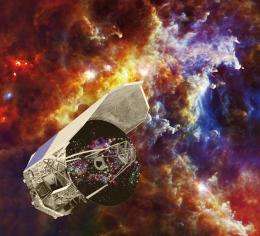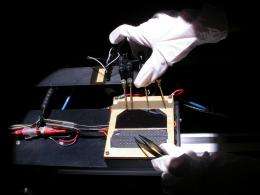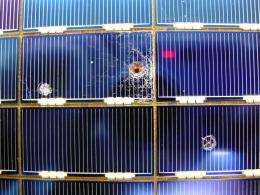Keeping the power on in space

All space missions have one inescapable dependency: the electricity flowing through their systems to keep them alive. Take away its power and a spacecraft is nothing more than space debris – an eventuality the space power professionals strive to avoid.
Next week sees more than 250 experts come together at an ESA-organised conference on power systems. The Ninth European Space Power Conference (ESPC) will take place on 6–10 June in Saint Raphaël on France’s Côte d'Azur, jointly organised by ESA and the French space agency, CNES.
The sun-drenched Mediterranean surroundings are appropriate for a discipline that places such importance on solar cells as a power source – space of course enjoying a limitless supply of sunlight. All the key players in the worldwide solar generator community will attend.

Other important elements of power system architecture under discussion include batteries for energy storage – crucial for those times when solar power is unavailable or for comparatively short-lived vehicles such as launchers – as well as electronics for power management, conversion and conditioning.
These must ensure that power is made available to sensitive instruments and other systems at just the right current and voltage, avoiding dangerous surges or undercurrents.
“The ESPC is a key event for Europe’s space power community, taking place roughly every three years,” explained Olivier Mourra, organising the event for ESA.
“Space agencies, business and academia come together to obtain a complete overview of current activities.
“ESA, CNES and European space companies (including telecom firms) will be sharing lessons learned from their current missions and communicating future plans, while the 250 -plus attendees will also include representatives from CNES, the German Aerospace Center DLR, the Japanese space agency JAXA, the US Naval Research Laboratory and NASA’s Jet Propulsion Laboratory.”
This broad interest reflects the importance of power systems as the core element of any spacecraft. Technological progress in the field offers enhanced performance to science missions as well as a competitive edge to industry, with satellites becoming especially power-hungry in the fiercely-contested telecom market.
The conference will include presentations of lithium-ion technology – the emerging technical standard for satellite batteries, first flown by ESA’s Proba-1 – and a new generation of solar cell technology boasting an efficiency higher than 30%.
The evolution of space power systems has traditionally been driven by ‘spin-in’ from terrestrial industry, but products need careful customising to withstand the extreme conditions of space – a challenging and costly process that cannot always be left to the market alone.
“At the last conference in Germany in 2008, participants made the point that they needed efficient and recurrent products and new space power system components to remain competitive,” added Olivier.
“ESA and the European companies took note and this time around will be presenting innovative solutions and new European products of that request.”

ESA will present findings from current missions such as Herschel, Planck and Meteosat Second Generation while also giving details of new technology being developed for the Agency’s Mercury probe BepiColombo, – which must withstand solar intensities 10 times stronger than in Earth orbit.
For the first time, this ESPC will include a full-scale exhibition, with a total of 25 companies presenting their products including specialist equipment for power system testing on the ground. The event will also include another first, offering a practical tutorial on reliable power system design.
Participants will also have the opportunity of joining a field trip to the Thales Alenia Space plant in nearby Cannes to visit their power system testing facilities. As an on-site alternative, ESA’s Hubble solar array specialist Lothar Gerlach will offer a presentation detailing his three decades of work on the space telescope.
Provided by European Space Agency




















